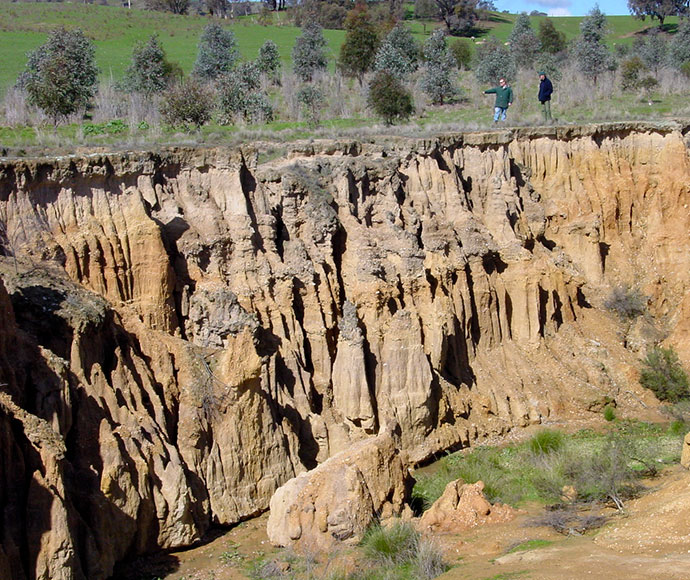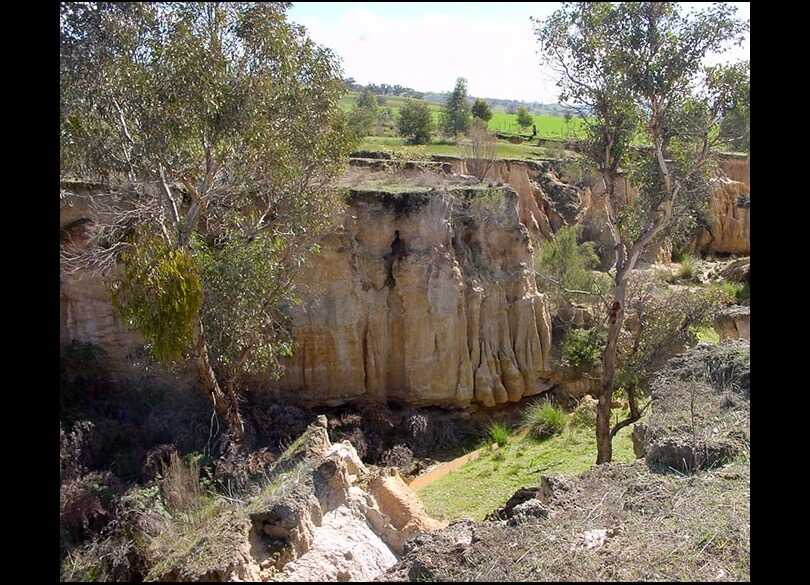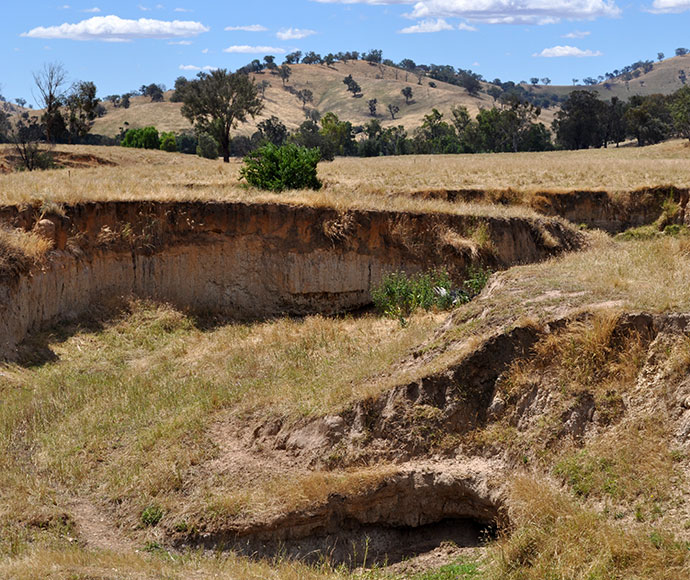Gully erosion is a widespread and often dramatic form of soil erosion caused by flowing surface water. It consists of open, unstable channels that have been cut more than 30 centimetres deep into the ground.
Gully erosion is a result of the interaction of land use, climate and slope. It occurs on many different soils and landforms in New South Wales.
Impacts
Gully erosion can:
- reduce land available for agriculture
- generate sediment and increase flooding that affects fences, farms, roads, railways, culverts and bridges
- wash sediment into waterways and water supplies
- speed up the rate of erosion by exposing subsoil
- increase turbidity (cloudiness) and nutrient loads in streams, rivers, dams and ponds
- make it more difficult to access affected land
- damage underground utilities such as power and phone cables, and pipes.
Causes of gully erosion
Several factors make gully erosion more likely:
- sparse ground cover caused by land clearing, over-grazing, repeated cultivation, fire, rabbits, feral animals or drought
- concentrated runoff from steep ground flowing into cleared drainage depressions
- unstable soils in drainage lines
- sodic or saline soils - sodic soils contain a large amount of sodium ions (salt) attached to clay particles
- intense rainfall
- increased runoff caused by low levels of vegetation cover and/or poor soil infiltration
- unfavourable catchment shape.
Go to the Soil Knowledge Network on YouTube
Locations
The Department of Climate Change, Energy, the Environment and Water is the custodian of several datasets that show the location and relative severity of gully erosion, which can be viewed on the SEED Data Portal.
Preventing gully erosion
The best way to prevent gully erosion is to maintain good ground cover. Most erosion is caused by occasional heavy falls of rain onto areas of poor ground cover. Actions that prevent gully erosion include:
- maintaining a minimum of 70% ground cover
- keeping a stubble cover of 30% on cultivated areas
- stabilising knickpoints (points where the channel slope changes sharply) and gully heads.
Treating gully erosion
Measures to stabilise gullies must be tailored to the catchment in which the gully occurs. Rainfall, soil type, land use and catchment dynamics must all be considered.
In general, 3 strategies are needed to repair gully erosion:
- modifying the catchment to reduce or redirect runoff
- stabilising gully heads, floors and walls with built structures, earthworks, vegetation or fencing
- reducing stock access to watering points.
The NSW Department of Primary Industries and Regional Development provides further detail on the treatment of gully erosion:
SoilTalk! news
Stay up to date on the latest news and events about landscapes, soils and systems in New South Wales.


